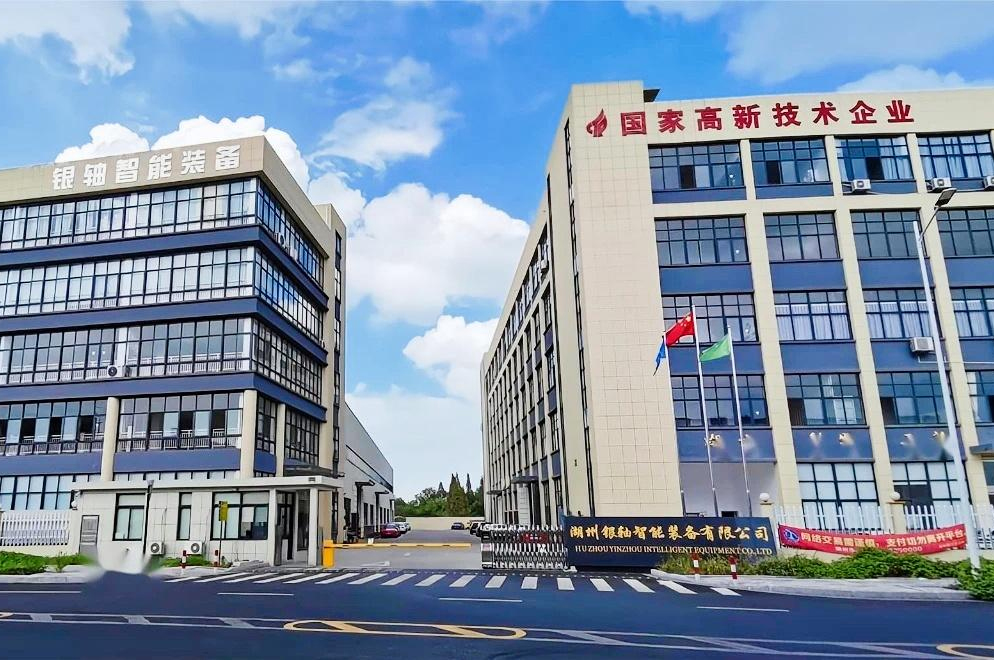Why Custom Conveyor Rollers
Beyond Standard Rollers: Supercharge Your Line with Customized Conveyor Rollers
Customized conveyor rollers provide the exact solution required for a specific application, offering superior performance, reliability,
longevity, and overall cost-effectiveness compared to trying to adapt standard rollers to unique or demanding situations.
Unlike one-size-fits-all solutions, customized rollers are engineered from the ground up to match the precise demands of your material handling system. This means selecting optimal materials – whether it's heavy-gauge steel for extreme impact resistance, specialized polymers for corrosion-free operation in harsh environments, or stainless steel for food-grade hygiene – ensuring longevity where standard rollers might fail. Dimensions are tailored exactly to your frame width, load requirements, and belt path, eliminating performance gaps or unnecessary bulk.

Motor Drive Rollers (MDRs)
Related Products
The conveying system does not consider motor, chain, intermediate shaft or other auxiliary driving elements; No need for bulky gear reduction box. Just install the motor driven roller on the rack and connect the cable to the power supply, and the job is done. The conveying system is cleaner, denser, beautiful, safe and reliable.Presently we mainly produce DC brushless gear motor driven roller, DC direct drive motor roller and AC gear motor driven roller. In addition, we also produce oil-cooled motor driven roller for belt conveyor and special motor driven roller for security inspection machine and sorting machine.
Gravity Rollers
Related Products
It can be classified as leaning or horizontal.
Leaning arrangement: goods are transported by gravitation. Simple structure, economical and practical, but not easy to control the sliding condition of goods. Suitable for short distance conveying between workstations and for gravity rack transport.
Horizontal arrangement: move by human force, suitable for light weight, short distance and so frequently conveying.
Chain & Belt Driven Rollers
Related Products
A belt drive is steady, low noise, and low in environmental pollution. It can run at high speeds, but was unable to work in places that were oiled.A chain drive has a large load capacity, is easy to assemble, is extremely environmental-adaptable, can operate in areas with oil and water frequently touching, and at high temperatures, but is prone to tearing in dusty environments, and makes a lot of noise at high speeds.
Precision Engineered in 3 Steps:
Your Custom Conveyor Roller Journey
Longwei transforms your operational challenges into high-performance conveyor rollers through a proven engineering workflow:
Step 1
Model Specifications
To begin customizing your conveyor rollers, we should first determine the optimal roller model (R series) and its critical dimensions including tube length, tube diameter, tube wall thickness, and shaft diameter. This is based on a detailed analysis of the roller's intended usage (such as conveyor type,loading capacity) and the characteristics of the transported goods (including weight, shape, material type).This assessment ensures the rollers are optimally designed for your application's requirements.

Step 2
Mounting Method
To confirm the mounting method(Female Thread,Spring Loaded,Flat Milling) based on the Bearing Brand and appropriate roller parts model(like poly-v pulley)and ensures that the custom rollers are designed and manufactured to meet the specific needs of the customer( precise mounting, longevity, and peak performance).

Step 3
Roller Material
Choose the appropriate tube material (steel, stainless steel, plastic, composite) and surface finish (painted, galvanized, specific coatings like polyurethane or rubber lagging) based on the application requirements, environmental factors, and desired performance characteristics like grip or corrosion resistance.

Unlock Peak Performance: The Ronwin Advantage
Choose precision-engineered rollers that transform efficiency, durability, and ROI.
Precise Dimension
Custom rollers ensure an exact match for specific conveyor frame widths, lengths, center distances, and overall layout requirements, eliminating adaptation issues with standard sizes.
Optimized Load Capacity & Durability
Rollers can be engineered with specific tube wall thickness, shaft diameters, bearing types (e.g., sealed, heavy-duty), and materials to handle the exact weight and impact of your conveyed products, maximizing lifespan and minimizing downtime.
Tailored Material Selection
Choose the ideal material (e.g., carbon steel, stainless steel, galvanized steel, aluminum, engineered plastics like polyurethane or nylon) to match the application's needs: corrosion resistance (food, chemical, washdown), high/low temperatures, abrasion resistance, or non-marking requirements.
Get in Touch with Us
Customized Conveyor Roller FAQs: Your Questions, Expert Answers
Q1: What type of roller should I choose?
A1:First, confirm whether the rollers are used in straight sections or curves; Then confirm whether the conveyor is unpowered or motor-driven; Finally, if it is motor-driven, confirm whether it uses chain drive or belt drive, and whether an accumulating function is required.
Q2:What is the roller length is suitable?
A2: Different sizes of goods should choose the appropriate roller length. Generally, W=A+(50-150)mm; for objects with a very rigid bottom, if normal transportation and safety are not to be affected, W=0.8A; for the tapered rollers of the curve, the roller working length is .
W: roller working length
R: inner turning radius
A: transport goods width
L: tranported goods length
Q3: What is the material and surface treatment of roller?
A3: According to the different conveying environment, determine the material and treatment of the roller (galvanized carbon steel, stainless steel, black oxide finish or rubber lagging).
Q4: How to choose the roller diameter and wall thickness?
A4: According to the weight of the conveying goods equally distributed to the loading roller, calculate the required load of each roller, so as to determine the roller tube wall thickness and shaft diameter.
Q5: What is the mounting method?
A5: Mounting method decides the complex of roller disassembly, different mounting method also influence the load capacity or roller. Generally there are mounting methods of spring loaded, female thread, flat milling and shaft pin.













